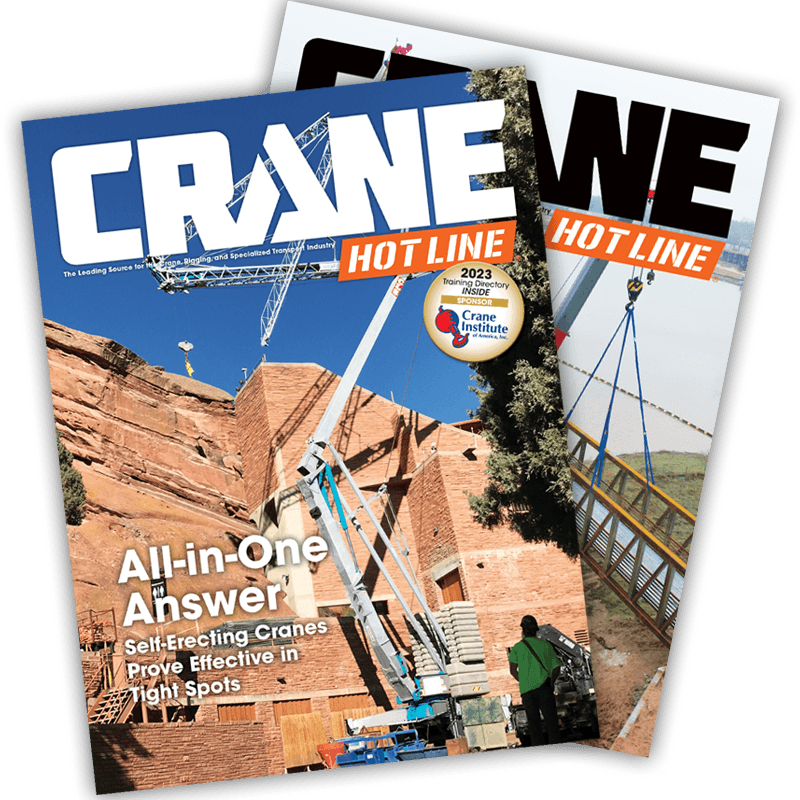Developing a Great Performer
Luke Webber
December 6, 2006 • At The Rental Show last February, Genie Industries,


360: What has your role been with the current redesign of the machines?
Webber: The redesign efforts consisted of gathering customer feedback on the current design, benchmarking competitors, establishing the specifications and scope of the redesign, coordinating a battery of physically abusive tests to ensure reliability, bringing customers in to evaluate the prototypes, and gathering further feedback. In addition, we have developed a marketing plan and begun preparing for upcoming shows, to name a few things.
360: What were some of the things you are changing in the redesign? What do you think the market is asking for?

A pair of Genie telehandlers hard at work.
Webber: Our goal for the new 10,000-pound telehandler family was to take good performers and create great performers! With improvements in lifting capability, maneuverability, serviceability, and reliability, while keeping simplicity in mind, we anticipate these new machines will reach new levels of popularity in the 10,000-pound telehandler rental market.
It comes as no surprise that rental companies know their customers' needs. Many are very tuned in to what their customers need in a 10,000-pound telehandler and are able to effectively communicate that to us. To a high degree, our customers are asking for machines that are simple and reliable. We believe that these machines, as well as our entire product family, continue to incorporate these traits in their designs. The improvements that we add beyond that are just “icing on the cake.”
360: Which models are going to be redesigned in 2006? When will the compacts be redesigned if you are planning on redesigning them?
Webber: As previously mentioned, we are introducing the GTH-1056 at The Rental Show and the GTH-1048 will follow shortly after. These were the only models redesigned in 2006. We are currently evaluating the rest of our product family, including our compact machines, for future redesigns in 2007 and beyond.
360: Are there any hurdles that the telehandler industry will need to overcome in the next few years? How do you see the softening of the housing market affecting the industry?
Webber: Telehandler manufacturers need to find new opportunities to improve value for customers. Focusing on just performance or pricing is not enough. If the whole package • from service and parts support, reliability, performance, and pricing • is the best in the industry, it can foster a mutually beneficial relationship between customer and manufacturer. Genie believes that we have been able to accomplish this with great results.
The North American telehandler industry has seen significant growth in the last several years. It's hard to find any construction site in
The new construction housing permits do play a significant role in setting the production pace for the telehandler industry. However, the industry is finding new levels of acceptance for these products outside of the housing market, such as farming, mining, oil, and shipping that will help level off a traditionally cyclical demand.
360: There have been a lot of changes in the industry lately, including some very high profile mergers. Genie went through a merger several years ago; now JLG is going through the same thing. Will this change the marketplace or affect the industry in any way?
Webber: Of course, there is a predetermined strategy with every merger, but I do not have enough information on the JLG merger to be able to comment on that.
I can say, however, that the Genie merger had a significant impact on the telehandler market due to the distribution channels that Genie had already established. Our customers have welcomed the newly designed and branded Genie Telehandlers, and as a result, we have seen an increase in our market share.
360: Where do you see the telescopic handler industry going in the future?Webber: I think that it's fair to say that the telehandler industry is getting more competitive. It is only inevitable that the products in this industry will continue to improve, and it's really those few manufacturers that can feel the pulse of the market and can deliver the best value proposition in the industry who will take the lion's share of market.


